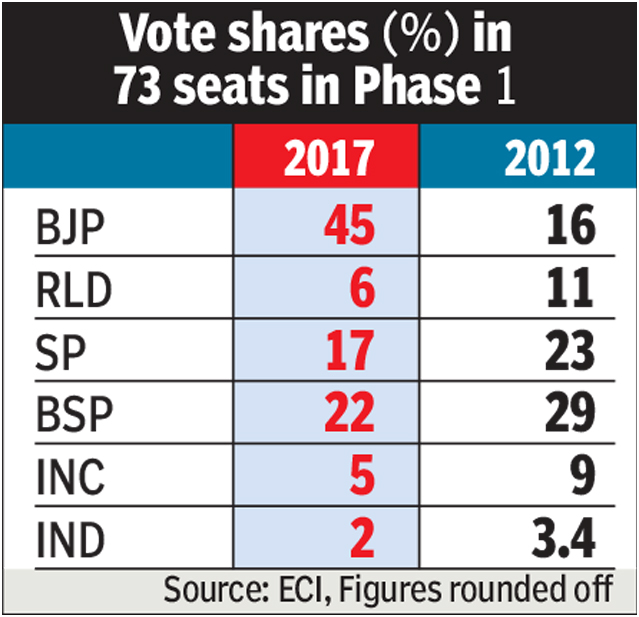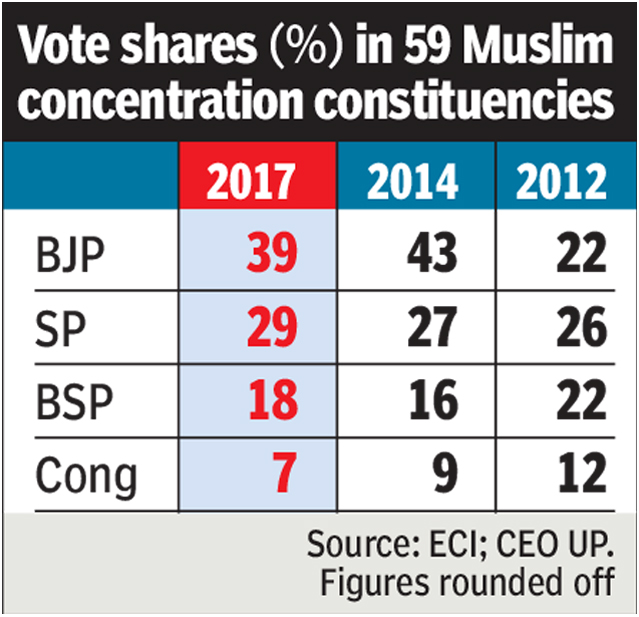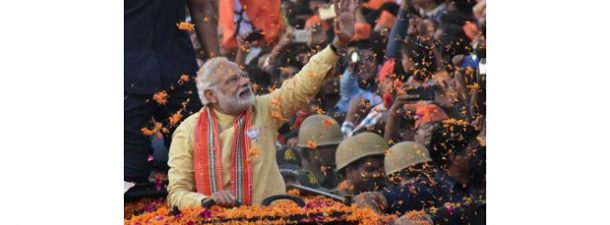HIGHLIGHTS
- Individual votes cannot be tracked, but voting trends in constituencies give an indication of where preferences of communities are heading.
- Numbers show first two groups backed SP and BSP, while the third stood by BJP
Every election campaign throws up myths that get busted by the results. But then, the results themselves generate new myths. The recent UP Assembly electionsare no exception.
Analysis of detailed results and comparison to earlier elections show up the truth about three riddles and the myths that pose as their answers: what happened to the Muslim vote? What happened to the Dalit vote? And what happened to the Jat vote?
Individual votes cannot be tracked, but voting trends in constituencies give an indication of where preferences of communities are heading.
This can be useful to find answers to knotty sociopolitical questions.

The campaign saw an intense battle between SP and BSP to win over Muslim votes which make up about 19% of the electorate.
BJP’s resounding victory, even in Muslim concentration areas, has led to speculation that, either the Muslim vote got divided between SP and BSP letting BJP win easily, or that Muslims voted for BJP. Both appear to be erroneous theories.
SP (29%) and BSP (18%) together got 47% vote in the 59 constituencies in UP where more than a quarter of the voters are Muslim. This is virtually unchanged since 2012 elections, although it went down to 43% in the 2014 Lok Sabha elections.
So, the Muslim support for the two parties is intact.

The difference this time was that BJP mopped up most of the other votes — getting 39% of total votes.
This was less than their 43% in 2014 Lok Sabha elections, but still so far ahead of the rivals that they won 39 seats while SP won 17 and BSP ended up with none. SP’s 29% vote share in these seats shows that its Muslim support base largely intact.
There was a much hyped battle between BJP and BSP to win Dalit votes, especially non-Jatav Dalits. Dalits make up about 21% of the population in UP. Since BSP lost badly in the elections ending up with just 19 seats, there was a view that Dalits voted en masse for BJP.
Actually, BSP has got 24% votes, down from its 27% in 2012 but up from 23% in 2014 Lok Sabha elections.
Among the 85 reserved seats in the state, BJP outflanked all other parties by getting 40% of the votes with BSP a distant second at 24%.
Again, BJP’s appeal was across all castes and may have included some Dalit communities too, but BSP’s vote share indicates that it is just about retaining its Dalit base while BJP surged ahead.
One big myth that the elections blew up was that of the Jats, a dominant community in western UP, deserting BJP after wholeheartedly supporting them in the previous 2014 election.
In the 73 seats in Phase 1 of the polls, BJP’s vote share increased from a mere 16% in 2012 to 45% in 2017 while RLD, led by Jat leader Ajit Singh, declined from 11% to just 6%. Vote shares of all other parties and even of independent candidates declined.
This clearly indicates that the Jats had stood by BJP, just as they had during the Lok Sabha elections.







No Comments
Comments for Myths of Muslim, Dalit and Jat votes busted are now closed.